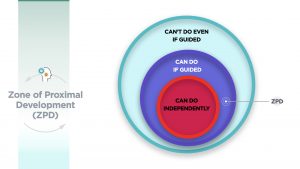Overview
Managing and Fostering Meaningful Interactions
Instructors sometimes overlook how a small thoughtful gesture and a few empathetic words can make students feel valued, cared for, and appreciated in the learning community. Creating a sense of community should be an essential element in our thinking (Darby, 2019) and communication to avoid the sense of isolation and help make the learning experience more meaningful. Fostering meaningful interactions with students helps them stay connected and engaged during the course journey (Blankstein et al., 2020). We previously explored the first two components of the Community of Inquiry (CoI) model (Garrison et al., 2000) – “cognitive presence” through active learning, “social presence” through collaborative learning. This module will explore aspects of building and retaining the human connection through “teaching presence” and its correlation with these other components.
Instructor presence has played a pivotal role in student engagement and has been extensively explored in literature. Vygotsky’s (1978) Zone of Proximal Development (ZPD) suggests that learners can accomplish a task by achieving optimal learning when they have guidance and support from teachers or knowledgeable peers. It refers to the difference between what the learners can learn on their own and what they can learn from their community.

The ZPD concept alludes to ‘scaffolding’ by Wood, Bruner and Ross (1976), a process through which a teacher or a more competent group member helps a developing student towards independence. The support can be exhibited in the form of focused questions, and positive interactions become tapered off when it’s no longer required and thus leads to greater potential learning gains and skill development.
Communication and interaction was and will always be a key element in the learning process. Some say that the meaning, relevance and modes of communication and interactions have changed immensely since pre-pandemic times.
Communication may seem natural in a brick-and-mortar classroom and less so in an online class. Isolation within the learning transaction can lead to stressful experiences for students (Alawamleh et al., 2020). Frequent and meaningful student-student and student-faculty contact can help students stay motivated and engaged.
Dr. Ismat Shah aptly summarizes five ways to forge human connections to try and initiate and sustain meaningful interactions with students.
If you would like to view an accessible and downloadable version of the captions from this video, please download the VTT Word document: Ismat Shah – Five Ways to Forge Human Connections.
Could you take any of Dr. Shah’s 5 Things to Try to a new level?
This module explores practical tips, techniques, and strategies to maintain and foster human-human contact.
Learning Objectives
After exploring this module, you will be able to:
- Identify and adapt interactive strategies relevant to your course;
- Develop and implement strategies to humanize your online classroom;
- Create and sustain lines of communication.

